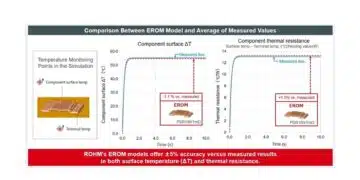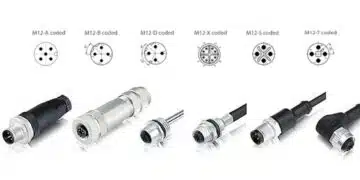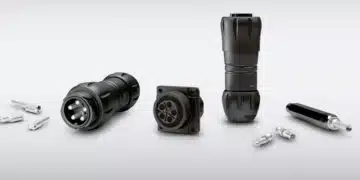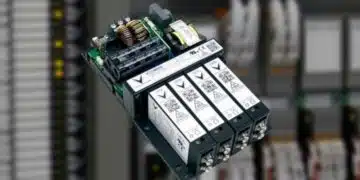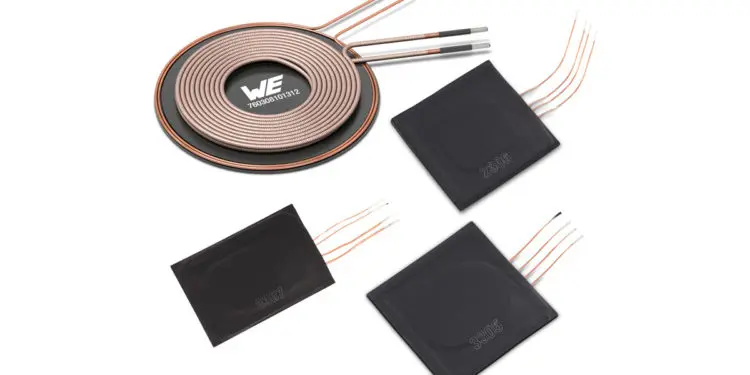Würth Elektronik expands its portfolio of wireless power coils. WE-WPCC WPT/NFC combines wireless power transmission with the Near Field Communication (NCF) standard thus enabling, for example, the combination of a charging station for smartphones with identification and payment functions.
Other new additions to the world’s largest range of wireless power transfer coils include a high power coil (WE-WPCC 760308101311) with 400 W output and a “flat” version, two coils whose respective heights of 2.8 mm and 3.1 mm are only half as high as those of other transmitter coils (WE-WPCC 760308101411 and 760308101410).
The NFC coil in the WE-WPCC WPT/NFC enables data rates up to 848 kbps and the WPT coil allows wireless power transmission output up to 100 W (at 20 V input voltage) in one efficient solution. Data can be transferred while wirelessly charging sensors, smartphones, wearables, handhelds, digital cameras, smart watches or tablets. The coil combination in the compact PET sleeve with adhesive surface can be used according to the Qi (5 W and 15 W) and AirFuel Alliance standards as well as in proprietary solutions with higher power. This means the transmitter is equally suitable for consumer electronics and industrial applications. Stranded wire and high-quality ferrite material ensure maximum energy transmission efficiency and the high permeability of the shielding concentrates the magnetic field and protects sensitive electronics or batteries from interference signals.
For the optimal combination of transmitter and receiver coils, Würth Elektronik recommends its “Mix and Match” tool and also the Wireless Power Development Kits.
The new transmitter coils are now available from stock without a minimum order quantity. Free samples can be requested.






